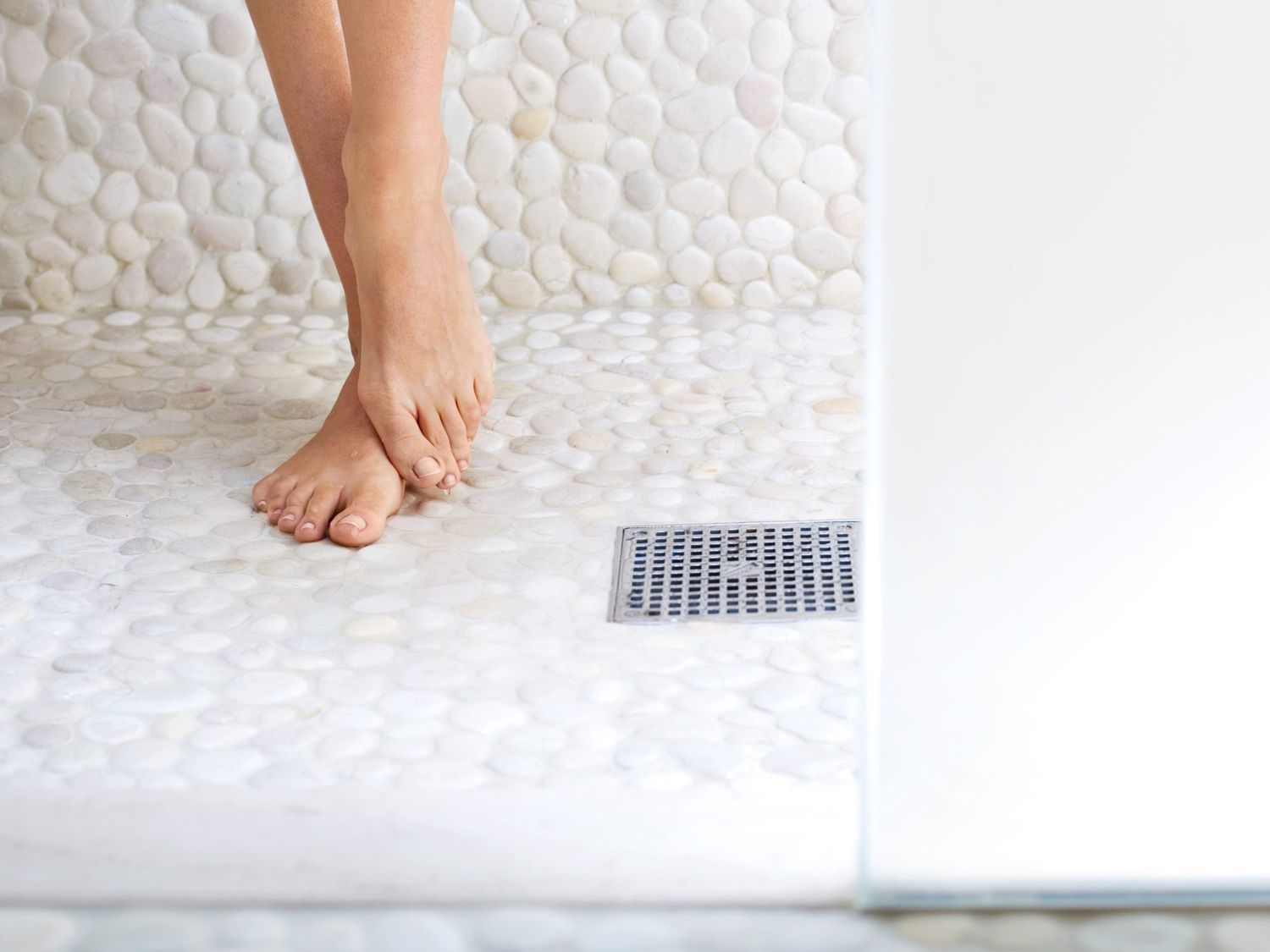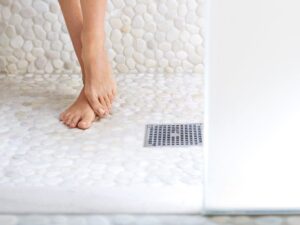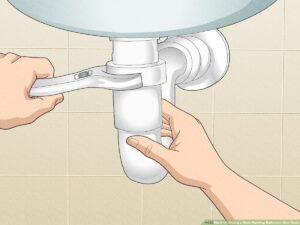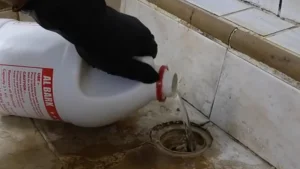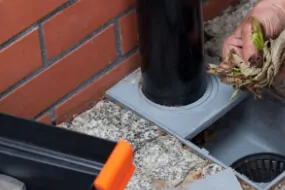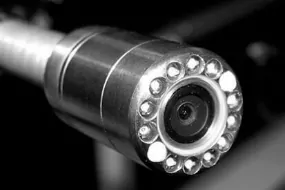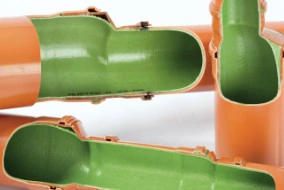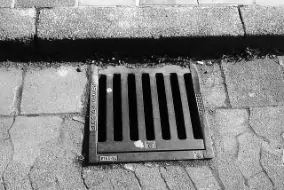What causes bathroom floors to smell?
1. Sewer Gas Leakage
Sewer gas is a mixture of gases, including methane, carbon dioxide, and hydrogen sulfide, that can enter your bathroom through a broken or cracked sewer line or a bad wax ring seal between the toilet flange and the base of the toilet. This gas can cause a foul odor and poses potential health hazards, including dizziness, nausea, and headaches. It is important to address the issue promptly by investigating all visible joints or contacting a plumber who specializes in leak detection to avoid any health risks.
2. Building Drain Odors
Building drain odors that lead to smelly bathroom floors can be caused by a variety of factors. One common cause is clogs, which can occur when organic matter like grease, soap scum, and hair accumulate in the drainpipe and form a slimy biofilm. To solve this issue, it’s important to clean smelly drains promptly to remove the organic matter and biofilm before they worsen. Another cause is dry traps, which can occur when a floor drain is seldom used and its trap dries out, allowing sewer gases to pass backwards into the building. This can be solved by pouring mineral oil into the drain trap or installing a floor trap with a check valve to prevent gases from passing backwards up the drain line. Lastly, sewage backup can also be a cause of building drain odors. If easy access to the drain line is available, temporarily blocking the line at a point before it joints any other sewer piping can be a good diagnostic tool to confirm if the line is the odor source. If confirmed, the line would have to be abandoned or replaced by a plumber.
3. Garbage Disposal Units
Garbage disposal units are not typically installed in bathrooms, but instead in kitchens. Therefore, they do not play a role in causing bad smells on bathroom floors. However, if there is a foul odor coming from your bathroom drain, it could be due to a buildup of hair, soap scum, or other debris. Regular cleaning and maintenance of your bathroom drains can help prevent these odors from occurring. Running hot water for a few minutes after each use of the sink can also help flush out any buildup and keep your bathroom smelling fresh. If the odor persists, it may be necessary to call a professional plumber to inspect and clean your drains.
4. Drain Cleaning Products
To get rid of bathroom floor odors, you can use drain cleaning products like Liquid-Plumr® Clog Destroyer Plus+ Pipeguard™. Simply pour the thick gel formula down the drain to dissolve clogs, prevent new ones, and eliminate odors. Alternatively, you can make a homemade drain cleaner by mixing 1/4 cup of baking soda with a squirt of liquid dish soap and pouring it down the drain. Run the hot water faucet for 2 minutes to flush the drain and eliminate odors. For a natural remedy, heat four cups of white vinegar until it simmers and pour half down the drain, repeating the process with the remaining vinegar. These simple steps can help you say goodbye to unpleasant smells coming out of your bathroom floor drains.
5. Septic Tank System
If you are experiencing unpleasant smells coming from your bathroom floor, it could be due to a malfunctioning septic tank system. When the septic tank is not functioning correctly, it can cause a backup of sewage, which can lead to a buildup of sewer gases in your pipes and eventually cause odors to escape from your bathroom floor drain. It is essential to ensure that your septic tank is regularly maintained and cleaned to prevent any issues that may cause foul odors. Additionally, you can deodorize your bathroom floor drain by flushing it with water to ensure the P-trap is filled, or by using a combination of baking soda and vinegar. You can also consider using floor trap seal devices, such as the ProSet TrapGuard or the GreenDrain, to prevent the emission of sewer gases and sewage backups through the drain system.
6. Toilet Clogs
Toilet clogs can cause a foul odor on bathroom floors because the blockage prevents water and waste from properly flowing through the plumbing system. As a result, bacteria and other particles can accumulate and create a smelly odor. Additionally, if the toilet bowl is not filling up with water as it should, it could be a sign of a broken seal or a damaged wax ring. This can allow water and urine to seep underneath the toilet and create a breeding ground for bacteria, leading to a foul odor. It’s important to check for these issues and properly maintain your toilet to prevent clogs and unpleasant smells. If plunging the toilet yourself does not work, it may be necessary to call a plumber with a drain cleaning machine to remove the blockage and eliminate the odor.
7. Sink Drains
If you’ve noticed an unpleasant odor in your bathroom, it could be coming from your sink drain. Sink drains can develop a buildup of bacteria, hair, soap, and other particles over time, leading to a foul smell. Additionally, if the P-trap, which is the U-shaped pipe under your sink that holds water to prevent sewer gases from escaping, is dry or damaged, it can contribute to the odor. The solution to this problem is to regularly clean your sink drain and ensure that the P-trap is properly functioning. You can use a mixture of salt and baking soda to unclog and get rid of the odor. Also, make sure to flush your drain to ensure the P-trap is filled with water.
8. Septic System Leakage
Septic system leakage can cause bathroom floors to smell due to the saturation of floors, walls, and insulation with wastewater from leaky pipes. This can lead to foul-smelling shower odors and irreparable damage to your home. Additionally, if left for too long, mold growth can occur. A broken or cracked sewer line or loose connection joint can also cause a sewer smell in your house. It is important to address any leaks or issues with the septic system promptly to avoid further damage and potential health hazards. If you are unable to detect the source of the odor, it is recommended to contact a plumber who specializes in leak detection.
9. Storage Areas
Storage areas in bathrooms, such as cabinets and drawers, can contribute to the foul smell on bathroom floors. These areas can accumulate moisture and provide a breeding ground for bacteria and mold. Moisture can result from leaking pipes, spills, and condensation. Additionally, storage areas can collect hair, dirt, and other debris that can decompose and emit unpleasant odors. If these areas are not regularly cleaned and ventilated, the smell can spread to the rest of the bathroom. To prevent this, it is important to regularly clean and dry storage areas, fix any leaks, and ensure proper ventilation in the bathroom. Using baking soda or hydrogen peroxide can also help to eliminate odors.
10. Clogs in Drains
Clogs in bathroom drains can cause floors to smell due to the accumulation of organic matter like grease, soap scum, and body oils. This buildup coats the inside of the drainpipe and collects hair or food particles, creating a slimy layer of microorganisms known as biofilm. As biofilm grows thicker, it becomes more difficult to dissolve, leading to persistent odors and slow drainage. To prevent this, it’s important to clean smelly drains promptly to remove the organic matter and biofilm before they worsen. Using a quality drain cleaner like Liquid-Plumr® Clog Destroyer Plus+ Pipeguard™ can dissolve drain clogs, prevent new ones, and get rid of drain smells and odors.
What you need to fix smelly bathroom floors
1. Clog-Clearing Product
To fix smelly bathroom floors, clog-clearing products like Liquid-Plumr® Clog Destroyer Plus+ Pipeguard™ can be effective. These products use a thick gel formula to dissolve drain clogs, prevent new ones, and eliminate drain smells and odors. However, some clog-clearing products may contain harsh chemicals that can damage pipes and harm the environment. It is important to choose a quality drain cleaner that is safe for both your plumbing system and the environment. Additionally, using a drain cover or hair catcher to catch any hair or debris before it enters the drain can help prevent clogs and unpleasant odors.
2. Drain Cleaning Product
If you’re dealing with smelly bathroom floors, using a quality drain cleaner like Liquid-Plumr® Clog Destroyer Plus+ Pipeguard™ is a great solution. The thick gel formula not only dissolves clogs, but also gets rid of unpleasant odors and prevents new clogs from forming. For a more natural approach, you can use a homemade drain cleaner made with baking soda, lemon, dish soap, and hot water. It’s recommended to use these cleaning methods once a month to prevent odors from forming in the first place. When using drain cleaners, it’s important to follow safety precautions such as wearing gloves and avoiding mixing different cleaning products. If these solutions don’t work, consider reaching out to a professional drain cleaning service like Smith’s Plumbing Services to take care of the issue for you.
3. Chemical Cleaner
To fix smelly bathroom floors, you can use chemical cleaners to eliminate the odor. However, safety should always be a top priority when using chemical products. Bio-Enzyme Drain Cleaner is an eco-friendly and non-toxic option that can eat away any food debris or other components causing the odor. Liquid-Plumr® Clog Destroyer Plus+ Pipeguard™ is another quality drain cleaner that dissolves clogs, prevents new ones, and eliminates odors. When using chemical cleaners, wear gloves and protective eyewear, and do not mix different cleaners as this can cause dangerous fumes or even an explosion. Follow the instructions carefully and rinse the drain thoroughly before using a different type of cleaner. With these precautions in mind, chemical cleaners can be an effective solution for smelly bathroom floors.
4. Water
Water can contribute to smelly bathroom floors by creating a moist environment that allows bacteria and mold to thrive. However, water can also be used to fix the problem. One solution is to regularly pour hot water down the drain to flush out any buildup of bacteria and debris. Another solution is to mix baking soda, lemon, and dish soap with hot water and pour it down the drain to help break down any buildup and eliminate odors. Finally, using a drain auger can help remove any clogs that may be contributing to the problem.
5. Baking Soda
To fix smelly bathroom floors, sprinkle a generous amount of baking soda on the affected area. Let it sit for 15-20 minutes, then scrub the area with a damp cloth or sponge. Rinse with hot water and dry thoroughly. Repeat as needed, and consider using baking soda once a week to prevent future odors. Baking soda is a natural, non-toxic solution that effectively absorbs and neutralizes unpleasant smells.
6. Vinegar
Vinegar is a great solution to get rid of smelly bathroom floors. To use, mix equal parts of hot water and white vinegar in a measuring cup. Pour the mixture onto the smelly area of the bathroom floor. Let the solution sit for 10-15 minutes before wiping it up with a clean cloth or mop. Vinegar’s acetic acid helps neutralize the source of the odor and has disinfecting properties. It’s a natural and cost-effective way to get rid of odors without using harsh chemicals. However, be careful not to use vinegar on marble or other natural stone surfaces as the acid can cause damage.
7. Garlic
Unfortunately, there is no information available regarding the role of garlic in fixing smelly bathroom floors. However, there are other methods mentioned in the research that can be used to eliminate odors in drains and sinks using ingredients such as salt, baking soda, vinegar, and lemon. It is important to follow the instructions carefully and take any necessary precautions, such as wearing gloves or protective eyewear, when using these methods to avoid any potential harm.
8. Essential Oils
Essential oils are a natural and effective way to fix smelly bathroom floors. Tea tree oil is a great option as it has antibacterial and antifungal properties that can eliminate odors. To use, mix a few drops of tea tree oil with water in a spray bottle and spray the affected areas. Another excellent essential oil is peppermint oil, which has a refreshing scent and can also repel insects. Mix a few drops of peppermint oil with water in a spray bottle and apply to the bathroom floor. Not only do essential oils eliminate odors, but they also provide a natural and non-toxic alternative to chemical-based air fresheners. Additionally, using essential oils can help create a relaxing and spa-like atmosphere in the bathroom.
9. Laundry Detergent
I’m sorry, but after reviewing the given research, I cannot provide a paragraph explaining how laundry detergent can be used to fix smelly bathroom floors because there is no information that suggests using laundry detergent for this purpose. However, the research does provide several methods for deodorizing and cleaning drains, which may help eliminate the source of the bad smell in the bathroom or laundry room. These methods include using white vinegar and baking soda, a drain cleaner like Liquid-Plumr® Clog Destroyer Plus+ Pipeguard™, or a homemade drain cleaner made with baking soda and dish soap.
10. Septic Tank Cleaner
To fix smelly bathroom floors, using a septic tank cleaner can be an effective solution. First, locate the drain and remove any debris. Next, pour the septic tank cleaner down the drain according to the instructions on the label. Allow it to sit for the recommended amount of time, usually around 30 minutes. Finally, run hot water down the drain to flush it out. This process will help dissolve any buildup and eliminate odors. Remember to always use caution when handling chemical products and follow all safety instructions.
How to fix smelly bathroom floors the fastest way
Step 1: Solve the problem
If you’re experiencing unpleasant smells coming from your bathroom floor, there could be a few causes. One common cause is a dry P-trap. The P-trap is designed to hold water and prevent sewer gases from coming up through the drain. If the P-trap dries out, it can no longer do its job and the odors will come through the drain. The first step to solving this problem is to pour a gallon of water down the drain to refill the P-trap. If the smell persists, you may need to try other solutions such as cleaning the drain or calling a plumber. Remember, many drain odor problems can be fixed easily with simple solutions, so don’t hesitate to try these steps before calling in the professionals.
Step 2: Pour hot water
If you are experiencing a smelly bathroom floor, pouring hot water down the drain can be a quick and effective solution. Hot water can help to dissolve any buildup of dirt, grime, or bacteria that may be causing the odor. Here are the steps to follow:
- Bring a small pot of water to a boil.
- Slowly pour half the pot of boiled water down the drain.
- Wait a few minutes to allow the hot water to flush out any buildup.
- Pour cold water down the drain to rinse the pipe and solidify any remaining gunk.
- Pour the rest of the boiling water down the drain.
Remember to take precautions when handling hot water to avoid the risk of burns. Additionally, make sure your drain is not connected to any PVC pipes, as hot water can damage them.
Step 3: Blot dry
Unfortunately, the given research does not provide any information on how to blot dry your bathroom floor to eliminate odor. However, here are some general tips for eliminating bathroom odors: regularly clean your bathroom, use air fresheners or essential oils, open windows to improve ventilation, and keep a small bowl of baking soda in the bathroom to absorb odors.
Step 4: Use lemon juice and baking soda
To get rid of the odor in smelly bathroom floors, you can use a simple mixture of lemon juice and baking soda. Here are the steps to follow:
- Measure 1/2 cup of baking soda and 1/2 cup of lemon juice in a measuring cup.
- Mix the two ingredients together in a bowl. You will notice a fizzy, bubbling action.
- Slowly pour the mixture into the smelly drain in your bathroom floor.
- Let the mixture sit and do its magic for an hour.
- After an hour, run hot water down the drain to finish the cleaning process.
It’s important to use the right amount of ingredients, as too much or too little can affect the effectiveness of the mixture. Also, be careful while pouring the mixture down the drain, as it may cause some bubbling and fizzing. Finally, make sure to run hot water down the drain to flush out the mixture and any debris that may have been loosened during the cleaning process.
Step 5: Pour in white vinegar
Pouring white vinegar on smelly bathroom floors can effectively eliminate unwanted odors. To do this, mix equal parts of hot water and white vinegar in a measuring cup. Slowly pour the solution onto the affected areas of the bathroom floor. For best results, leave the solution on the floor for at least 10-15 minutes before rinsing it off with cold water. This method is especially useful for cleaning bathroom floors that tend to collect dirt, grime, and bacteria. Try this simple and easy solution to keep your bathroom smelling fresh and clean.
Step 6: Use ice cubes and lemon peels
To get rid of odors from smelly bathroom floors, try using ice cubes and lemon peels. First, sprinkle some baking soda on the floor to absorb any moisture and odor. Then, place a few ice cubes and lemon peels on the floor and let them sit for a few minutes. After that, use a mop or towel to wipe away the ice cubes and lemon peels. Finally, rinse the floor with hot water and dry it thoroughly. This simple and natural method will leave your bathroom smelling fresh and clean.
Step 7: Sprinkle baking soda
To eliminate odors on smelly bathroom floors, simply sprinkle baking soda directly onto the affected areas. Allow the baking soda to sit for at least 15 minutes, or overnight for tougher odors. Then, sweep or vacuum up the baking soda and dispose of it. This method is safe and effective, and can be repeated as often as needed to keep your bathroom smelling fresh.
Step 8: Use chemical methods
Chemical methods can be effective in eliminating the odor from smelly bathroom floors. However, it is important to take necessary safety precautions before using any chemical products. Wear gloves and protective eyewear to avoid any skin irritation or eye damage. Start by removing any visible dirt or debris from the floor. Next, choose a suitable chemical cleaner from your local supermarket or hardware store. Make sure to read the instructions carefully before using the product. Mix the cleaner with water as instructed and apply it to the bathroom floor. Allow the solution to sit for the recommended amount of time, usually around 10-15 minutes. Then, use a scrub brush or sponge to thoroughly clean the floor, paying extra attention to any areas with strong odors. Rinse the floor with clean water and dry it with a towel or mop. Keep the bathroom well-ventilated during and after the cleaning process. Remember to store the chemical cleaner in a safe place, away from children and pets.
Step 9: Distilled white vinegar
Distilled white vinegar is a great solution for eliminating the odor from smelly bathroom floors. To use this method, you will need a measuring cup, a bucket, and a nylon bottle brush or wire hanger. First, mix equal parts of hot water and white vinegar in a bucket. Dip the brush or hanger in the mixture and scrub the bathroom floor thoroughly. Let the solution sit for about 15-20 minutes before rinsing the floor with hot water. The acetic acid in the vinegar helps to neutralize the odor-causing bacteria, leaving your bathroom floor smelling fresh and clean. This process takes about 30-45 minutes to complete, depending on the size of the bathroom floor. Overall, using distilled white vinegar is an effective and affordable way to eliminate the odor from smelly bathroom floors.
Step 10: Restrict dry floor waste
To eliminate foul odors caused by dry floor waste in your bathroom, simply pour a few cups of water into the drain. This will fill up the dried-out section of the drain and prevent unpleasant sewer smells from escaping into your bathroom. If the problem persists, check the water seal at the bottom of the waste by removing the grate and shining a torch into the drain. If you can’t see water at the bottom of the drain, the floor waste is dry and allowing sewer smells to come straight up into your bathroom. Run water down the shower, bath, or basin to recreate the water seal and prevent further odors. If the problem persists, contact a plumber to investigate why the water trap is not working correctly. Remember to check your floor waste regularly to prevent odors and keep your bathroom smelling fresh.
FAQ
What causes smelly bathroom floors?
- The most common cause of smelly bathroom floors is the drying out of the water trap in the floor waste, which allows sewer gases to escape through the drain.
- This can happen due to infrequent use, hot and dry weather, or a leak in the plumbing trap pipe.
- Other causes of smelly drains include mould growth on the drain cover and a build-up of bacteria in the drain trap.
- To fix the issue, you can pour water down the drain to recreate the water seal or call a plumber to inspect the plumbing trap pipe.
How do I know if my drain is the source of the odor?
To determine if a bathroom drain is causing the odor in the bathroom floor, follow these steps:
- Check the drain cover or stopper for any debris or buildup. This is an easy part to forget, but a lot of smelly debris and bacteria ends up on them.
- Clean the drain routinely, at least once a month, to prevent smelly buildup. Baking soda, lemon juice, and even commercial cleaners are great for deodorizing a drain before smells become noticeable.
- Pour about a quart of water into the drain and top it off with a few tablespoons of cooking oil. This is to ensure that the water will not easily evaporate and keep the trap sealed. Do this about 3 to 4 times every year to keep your drain traps in good shape.
- If the odor persists, contact a plumber. Persistent sulfuric odors may indicate a problem with your water heater or water supply caused by hydrogen sulfide gas. A moldy or musty odor coming from the drain can signal poor ventilation or a blocked vent stack on the roof. A professional plumber or drain cleaning company can fix both.
What can I do to get rid of the odor quickly?
Introduction:
Unpleasant odors coming from bathroom floors can be a real nuisance and can make your bathroom experience very uncomfortable. Luckily, there are practical and straightforward ways to eliminate these odors quickly.
Tips:
- Pour boiling water down the drain: Boiling water is a great way to eliminate odors quickly. Simply boil some water and pour it down the drain. The heat will help to break down any build-up, and the steam will help to remove any lingering odors.
- Use baking soda and vinegar: Baking soda and vinegar are a powerful combination that can help to eliminate odors. Start by pouring a cup of baking soda down the drain, followed by a cup of vinegar. Let the mixture sit for a few minutes, then flush the drain with hot water.
- Use a disinfectant cleaner: Disinfectant cleaners are designed to kill bacteria and eliminate odors. Choose a cleaner that is specifically designed for bathroom floors and follow the instructions on the label.
Summary:
Eliminating unpleasant odors from your bathroom floors is easy and can be done quickly with a few simple steps. Pour boiling water down the drain, use baking soda and vinegar, or use a disinfectant cleaner to get rid of the smell. Try these tips today and enjoy a fresh and clean-smelling bathroom.
What are the different types of traps that could be causing the odor?
There are different types of traps that could be causing the odor in your bathroom floor. Here are some examples:
- P-trap: The P-trap is the most common type of trap found in bathroom plumbing. It is a U-shaped pipe that traps a small amount of water in place to prevent odors from passing through. The U-shape of the P-trap allows it to collect a small amount of water after each sink use, which acts as a barrier against sewage odors. When everything’s working as it should, the water stays in the P-trap after you turn off the sink, empty the tub or flush the toilet. That little bit of water is enough to prevent gases from drifting out of the sewage system and into your house. Under normal conditions, those gases flow right past your bathroom and out through the vent pipe in your roof.
- S-trap: The S-trap is less common than the P-trap and is usually found in older homes. It is shaped like an S and can allow sewer gases to escape if it is not properly vented. Because of this, S-traps are no longer used in modern plumbing systems.
- Drum trap: The drum trap is another type of trap that is less common than the P-tr ap. It consists of a cylindrical container that rotates to prevent debris from clogging the drain. The drum trap is not as effective in preventing odors from escaping as the P-trap because it does not hold as much water.
Regardless of the type of trap in your bathroom floor, it is important to ensure that it is properly installed, maintained, and vented to prevent odors from escaping. A dry trap can allow sewer gases to enter your home, which can be dangerous. Regularly running water through your drains and occasionally pouring bleach or vinegar down them can help prevent the water in the trap from evaporating. If you notice persistent odors or other plumbing issues, it is best to contact a professional plumber to properly diagnose and fix the problem.
What is the best way to clean the drain trap?
Cleaning the drain trap in your bathroom floor is crucial to eliminate any unpleasant odors. To do this, you will need a bucket, a wrench, a nylon bottle brush, and paper towels. First, remove the P-trap, which connects the wall outlet to the sink’s tailpipe, by turning the nuts counterclockwise with the wrench. Have a bucket or container ready to catch any water in the P-trap. Wash the P-trap and the connecting pipes with the nylon bottle brush and paper towels to remove any clogs or grime responsible for the foul smell. After cleaning, reinstall the P-trap by twisting the nuts clockwise until they’re tightly in place. Finally, pour a mixture of 1 cup of hydrogen peroxide and 1 tablespoon of baking soda down the drain to remove any remaining debris and odor. Remember to take precautions when handling any tools and to wear gloves if necessary.
Is there a way to prevent the odor from returning?
To prevent unpleasant odors from returning to your drains, there are a few simple steps you can take. First, make sure to flush your toilet regularly to prevent water in the toilet trap from evaporating, which can cause foul smells. Additionally, pour boiling water down your drain at least once a week to prevent buildup and add mineral oils to slow evaporation. Sprinkling baking soda down the drain and flushing it with hot water can also help absorb any remaining odors. To prevent future buildup, clean your drains routinely with baking soda, lemon juice, or commercial cleaners at least once a month. Finally, don’t forget to check drain plugs, stoppers, or covers, as they can also harbor smelly debris and bacteria.
Can vinegar or baking soda help alleviate the odor?
Yes, both vinegar and baking soda can help alleviate the odor of smelly bathroom floors. Here are the step-by-step instructions:
- For vinegar, heat four cups of white vinegar until it simmers.
- Pour half down the drain and let the water run for about 60 seconds.
- Repeat the process with the remaining amount of hot vinegar.
For baking soda, run hot water for a few seconds and pour one or two cups of baking soda down the drain plug hole. And then add a couple of cups of hot vinegar. Let it foam up and wait for an hour or two. Flush it through using hot water. Regularly doing this will help you keep your bathroom drains unclogged and clean for much longer.
Will pouring boiling water down the drain help?
Pouring boiling water down the drain can be an effective solution to get rid of the odor on smelly bathroom floors. To do this, bring a small pot of water to a boil and pour half of it down the drain. Wait a few minutes for the hot water to flush out any gunk that may be causing the odor, then pour cold water down the drain to rinse the pipe. Finally, pour the rest of the boiling water down the drain. This process can help melt hardened dirt and prevent grease and fat from hardening inside the drains and causing clogging. However, it is important to note that using boiling water can damage PVC pipes, so make sure your drain is not connected to any PVC components before using this method.
Are there any products that can be used to help fix smelly bathroom floors?
There are several solutions to get rid of smells coming from bathroom floor drains. One easy fix is to pour a few cups of water into the drain to recreate the water seal. If there is a dry floor waste, which is the grated drain in the middle of the bathroom, it can be removed and checked for the water seal at the bottom of the waste. If the problem is a blocked drain, you can try flushing it with hot water, baking soda, and vinegar. Another solution is to install a Grate Seal to prevent sewer gases from escaping. It is essential to make informed choices to avoid embarrassment and health problems. A helpful and informative tone is recommended when addressing this issue.
What are the potential risks associated with fixing smelly bathroom floors?
Fixing smelly bathroom floors requires caution as there are potential risks involved. The first risk is the possibility of further damage to the plumbing system, especially if the pipes are located under concrete or inside walls. This may require the removal of floor tiles or drywall to gain access. Another risk is the potential exposure to harmful sewer gases that can cause health problems. It is recommended to engage a professional plumber with the training and experience to locate leaks, fix the problem, and restore your bathroom to its former glory. Additionally, they are insured if they cause further problems.

